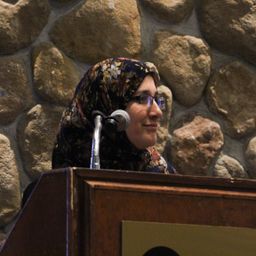MIG-6/Papilin’s C-term PLAC domain regulates the extracellular matrix composition and affects NOTCH signaling
Mon statut pour la session
MIG-6/Papilin’s C-term PLAC domain regulates the extracellular matrix composition and affects NOTCH signaling
Pier-Olivier Martel1, Julia Degremont2, Maria Lindsay1, Matthieu Valet1, Lucie Beaulieu1, Lloyd-Venseslas Fotso-Dzuna1, Mohamad-Ali El-Mortada1 & Patrick Narbonne1
1Département de Biologie Médicale, Université du Québec à Trois-Rivières, Trois-Rivières, Québec, Canada., 2Département de Pathologie et Biologie Cellulaire, Institut de Recherche en Immunologie et en Cancérologie (IRIC), Université de Montréal, Montréal, Québec, Canada.
Multipotent Stem Cells (SCs), also called “adult” or “tissue-specific” SCs, are present in most adult tissues and are responsible for their maintenance and regeneration following damage. SCs thus have an enormous therapeutic potential. A better understanding of the fundamental mechanisms that regulate SCs is essential to develop their full potential and use them to treat various conditions, including several orphan diseases.
Using the C. elegans germline as a model, we performed a screen designed to identify regulators of SC proliferation. We isolated a hypomorphic allele (qz2) of the gene encoding MIG-6/Papilin, a large Extra Cellular Matrix (ECM) protein that is highly conserved and has an important role in organ development in C. elegans, Drosophila and mammals through its interactions with metalloproteases. Our results indicate that mig-6(qz2) synergistically interacts with a conditional gain-of-function (gf)allele of the GLP-1/Notch receptor. Indeed, loss of the PLAC domain dramatically promotes the proliferation of SCs in glp-1(gf) mutants, leading to the formation of germline tumors, even under permissive conditions, as well as a dramatic increase of embryonic and larval lethality. We also noticed that mig-6(qz2) mutants have more Collagen IV around the distal regions of their gonad, while Collagen IV is one of the main components of theECM. Interestingly,preliminary data show that GLP-1 activity may be abnormally elevated in mig-6(qz2) mutants, while the ligand abundance remains unchanged.Therefore, our data suggest that loss of Papilin’s PLAC domain causes an accumulation of Collagen IV in the ECM, altering its structure/composition to promote GLP-1 activity.






Discussion